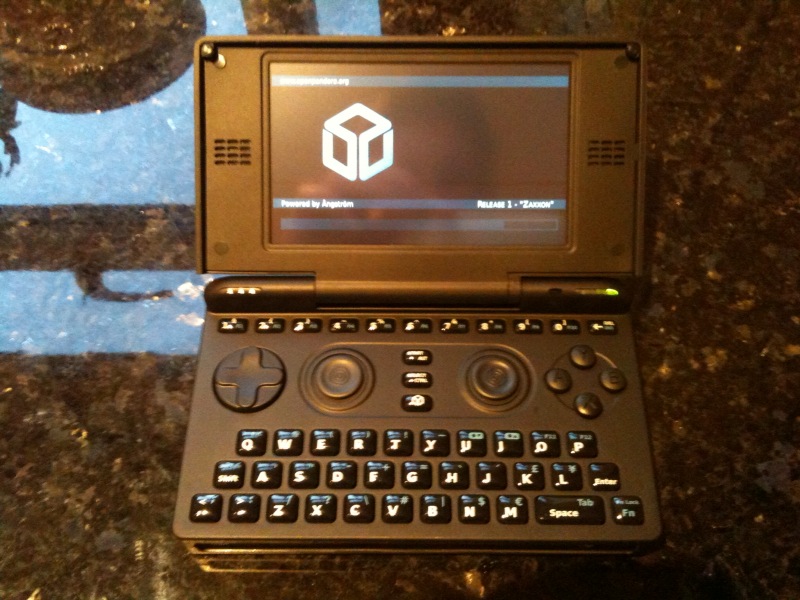Linux-Based Pandora Ships with 600 MHz ARM
It's a pocket computer that looks like the Nintendo DSi XL.
Back in December we reported that the open-source, Linux-based Pandora pocket computer was close to completion, facing a final testing with the FCC by the end of the year. Now the device has entered mass-production, with the Pandora team currently building the first batch of 4,000 units. Private pre-orders have even begun to ship.
Pandora appears unchanged since December, sporting a small, Nintendo DS XL-like clam-shell appearance while retaining the usefulness of a netbook. It still uses the ARM Cortex-A8 600 Mhz+ CPU and a 430 MHz TMS320C64x+ DSP Core. Additional hardware includes the 110 MHz PowerVR SGX GPU, 256 MB of RAM, and 512 MB of flash memory. The device's 4.3-inch resistive touchscreen provides a native 800 x 480 resolution and 16.7 million colors.
Although Pandora is promoted as "the most powerful gaming handheld," the specs lean more towards an ultra-portable, pocket-sized PC. This portable rig can surf the Internet thanks to a built-in Wi-Fi 802.11 b/g wireless adapter, allow users to compose email using its 43-button QWERTY keyboard, and perhaps even export high-quality video to a TV thanks to its S-Video output jack. The Pandora sports a battery with a 10+ hour duration.
On the gaming front, Pandora supposedly runs Quake 3 Arena rather well, however it's promoted as a device capable of running older games and console ROMS via emulators--heck, the Motorola Droid can do those equally as well. Currently pricing is unknown, and general consumers are unable to pre-order as of this writing.
Is this just a glorified smartphone?

Kevin Parrish has over a decade of experience as a writer, editor, and product tester. His work focused on computer hardware, networking equipment, smartphones, tablets, gaming consoles, and other internet-connected devices. His work has appeared in Tom's Hardware, Tom's Guide, Maximum PC, Digital Trends, Android Authority, How-To Geek, Lifewire, and others.
-
anamaniac Ultra portable with dedicated gaming controls.Reply
This is what the next PSP should be.
Bit underpowered though, even the Cowon S9 has a dual core 500MHz ARM... and it's a music player. -
maxsp33d My nokia N900 does all of it and to top it all, it can also make phone calls and video calls via skype.Reply -
nforce4max I have heard about these before a few weeks ago, they look interesting. Its some what cool that there is a PowerVR gpu since they left the consumer and professional pc/power pc graphics sector a decade ago.Reply
Linux FTW -
ksa-_-jed If you a Linux user and you want a small notebook for browsing and with long battery life then these is your best chioceReply
-
Honis Replyheck, the Motorola Droid can do those equally as well.
No, it can't. The Droid is missing the built in game pad interface. -
the_krasno You can connect a headset to it and it has an internal microphone, so yes, you can use it as a phone with Skype.Reply
USB support means you can plug wi-fi or 3G adapters.
Linux means you are free to modify the software, and the large base Linux has means tons of content available to it and people working on it.
It weighs only 335 grams.
I. Want. One. -
Ho hum, another Linux fan box that will take over the world, all other companies are shaking at the knees! I thought it was going to be a dedicated Pandora music service box.Reply
